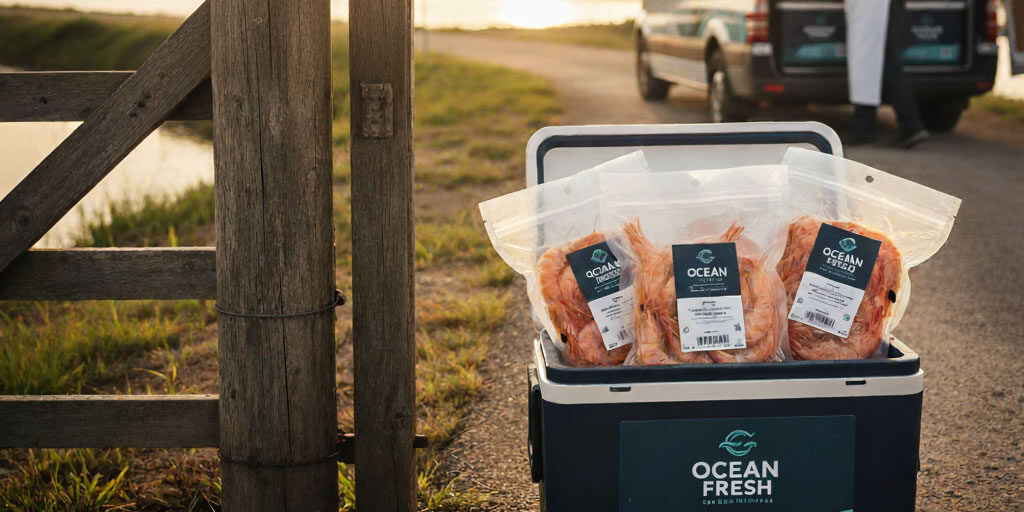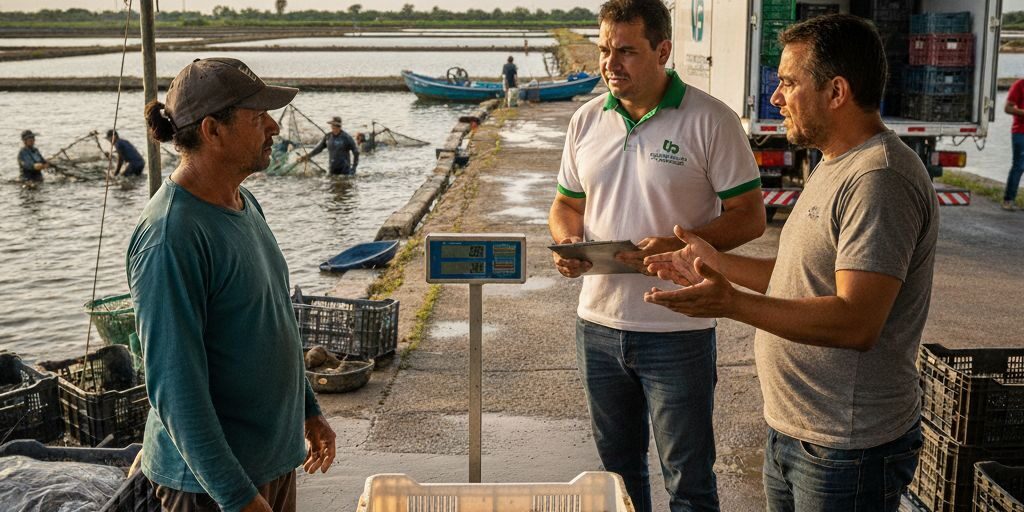- Software Gestor para Aquicultura
- (85) 2139-6730
- contato@despesca.com.br
Leaving the Farm Gate: How to Create Your Own Brand and Sell Shrimp Directly to the Consumer

The Complete Guide to Biosecurity in Aquaculture: From Checklist to Action
01/09/2025
On-Farm Inspections: Be Prepared. What Are the Main Items Checked by Environmental and Health Agencies?
03/09/2025The journey of a shrimp farmer is marked by challenges ranging from pond management to financial administration. One of the biggest obstacles, however, arises after the harvest: dependency on intermediaries. Selling the entire production to processing plants or middlemen, while practical, often results in reduced profit margins and a loss of control over the product’s value.
Verticalizing production, by creating a private brand and selling directly to the consumer, emerges as a powerful strategy to reverse this scenario. By taking control of commercialization, the producer not only increases profitability but also builds a valuable asset: a brand recognized for its quality.
The First Step: Building a Valuable Identity
Before thinking about logistics, it’s crucial to create a strong brand. A brand is more than a logo; it’s the promise of quality you deliver to your customer.
- Define Your Differentiator: What makes your shrimp special? Is it the size (grading), the freshness, a sustainable farming method, or the absence of chemicals? This differentiator will be the cornerstone of your communication.
- Create a Name and Visual Identity: Choose a name that is memorable and easily associated with the product. Invest in a professional logo and packaging design that convey trust and quality.
- Packaging is Key: The packaging is the customer’s first contact with your brand. Opt for solutions that guarantee the preservation and safety of the food, such as vacuum-sealed bags. The labeling must be clear, containing mandatory information like weight, packaging date, and expiration date, as well as contact information and, if applicable, inspection seals (municipal, state, or federal).
Structuring Direct Sales: Logistics and Channels
With the brand defined, the next challenge is getting the product to the final consumer in perfect condition.
- Sales Channels: Explore multiple fronts. Start with on-farm sales and local deliveries. Use social media and WhatsApp Business as virtual catalogs and ordering channels. In the medium term, consider partnerships with restaurants, fish markets, and specialty stores that value products with a controlled origin.
- Cold Chain Logistics: Maintaining the temperature is non-negotiable. For transportation, use high-quality coolers with flake ice. For larger operations, a refrigerated vehicle becomes essential. Plan delivery routes to optimize time and ensure the shrimp arrives frozen or perfectly chilled.
- Legislation and Licensing: Direct sales require compliance with sanitary regulations. Check with your local or state department of agriculture about the necessary licenses for processing, storing, and transporting seafood. Obtaining an inspection seal adds value and opens doors to more demanding markets.
Efficient Management: Technology as an Ally
Selling directly to the consumer adds new layers of complexity to farm management. Controlling finished product inventory, managing orders, cash flow, and customer relationships can become a bottleneck without the right tools.
This is where management software becomes a competitive advantage.
- Precise Inventory Control: A system allows you to record the harvested production and convert it into an inventory of processed products (whole shrimp, headless, etc.), graded by size. This ensures you only sell what you actually have available, preventing errors with customers.
- Integrated Financial Management: Record all sales, control associated costs (packaging, fuel, marketing), and analyze the real profitability of your new sales channel. Gain clarity on which channels and products bring the best financial return.
Leaving the farm gate is a bold step, but when planned and supported by technology, it transforms the producer into a true entrepreneur of their business, with full control over their product, their brand, and, most importantly, their profitability.



